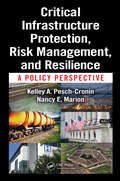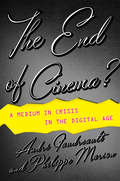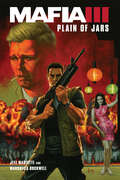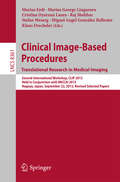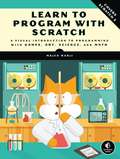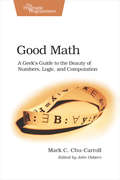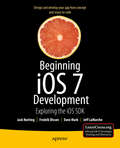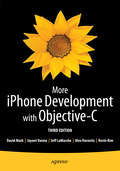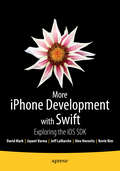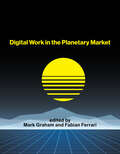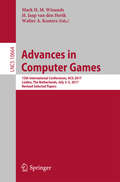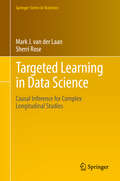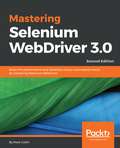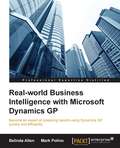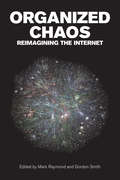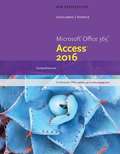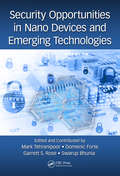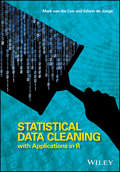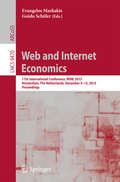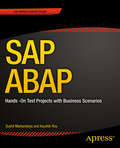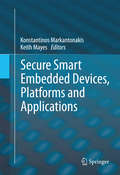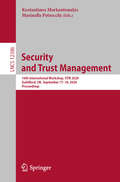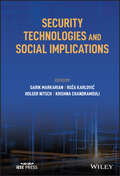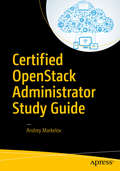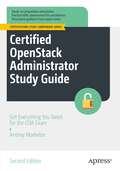- Table View
- List View
Critical Infrastructure Protection, Risk Management, and Resilience: A Policy Perspective
by Nancy E. Marion Kelley CroninCritical Infrastructure Protection and Risk Management covers the history of risk assessment, crtical infrastructure protection, and the various structures that make up the homeland security enterprise. The authors examine risk assessment in the public and private sectors, the evolution of laws and regulations, and the policy challenges facing the 16 critical infrastructure sectors. The book will take a comprehensive look at the issues surrounding risk assessment and the challenges facing decision makers who must make risk assessment choices.
The End of Cinema?
by Philippe Marion Timothy Barnard André GaudreaultIs a film watched on a video screen still cinema? Have digital compositing, motion capture, and other advanced technologies remade or obliterated the craft? Rooted in their hypothesis of the "double birth of media," André Gaudreault and Philippe Marion take a positive look at cinema's ongoing digital revolution and reaffirm its central place in a rapidly expanding media landscape.The authors begin with an overview of the extreme positions held by opposing camps in the debate over cinema: the "digitalphobes" who lament the implosion of cinema and the "digitalphiles" who celebrate its new, vital incarnation. Throughout, they remind readers that cinema has never been a static medium but a series of processes and transformations powering a dynamic art. From their perspective, the digital revolution is the eighth major crisis in the history of motion pictures, with more disruptions to come. Brokering a peace among all sides, Gaudreault and Marion emphasize the cultural practice of cinema over rigid claims on its identity, moving toward a common conception of cinema to better understand where it is headed next.
Mafia III: Plain of Jars (Mafia III)
by Jeff Mariotte Marsheila RockwellThis novel, modeled in the style of detective "pulp" novels from the 1960s, expands upon the world of 1968 New Bordeaux, Louisiana, a city ruled by organized crime and corrupt officials as depicted in the hit videogame Mafia III. Featuring characters and locations from the game, and a brand new original storyline full of intrigue, suspense, passion, and violence, Mafia III: Plain of Jars is a great read for fans of the game and crime genre hounds looking for another intriguing story to delve into.
Clinical Image-Based Procedures. Translational Research in Medical Imaging: Second International Workshop, CLIP 2013, Held in Conjunction with MICCAI 2013, Nagoya, Japan, September 22, 2013, Revised Selected Papers (Lecture Notes in Computer Science #8361)
by Marius Erdt, Marius George Linguraru, Cristina Oyarzun Laura, Raj Shekhar, Stefan Wesarg, Miguel Angel González Ballester and Klaus DrechslerThis book constitutes revised selected papers from the International Workshop on Clinical Image-Based Procedures, CLIP 2013, held in conjunction with MICCAI 2012 in Nagoya, Japan, in September 2013. The 19 papers presented in this volume were carefully reviewed and selected from 26 submissions. The workshop was a productive and exciting forum for the discussion and dissemination of clinically tested, state-of-the-art methods for image-based planning, monitoring and evaluation of medical procedures.
Learn to Program with Scratch: A Visual Introduction to Programming with Games, Art, Science, and Math
by Majed Marji<P>Scratch is a fun, free, beginner-friendly programming environment where you connect blocks of code to build programs. While most famously used to introduce kids to programming, Scratch can make computer science approachable for people of any age. Rather than type countless lines of code in a cryptic programming language, why not use colorful command blocks and cartoon sprites to create powerful scripts? <P>In Learn to Program with Scratch, author Majed Marji uses Scratch to explain the concepts essential to solving real-world programming problems. The labeled, color-coded blocks plainly show each logical step in a given script, and with a single click, you can even test any part of your script to check your logic. You'll learn how to: <br>–Harness the power of repeat loops and recursion <br>–Use if/else statements and logical operators to make decisions–Store data in variables and lists to use later in your program <br>–Read, store, and manipulate user input <br>–Implement key computer science algorithms like a linear search and bubble sort <br>Hands-on projects will challenge you to create an Ohm's law simulator, draw intricate patterns, program sprites to mimic line-following robots, create arcade-style games, and more! Each chapter is packed with detailed explanations, annotated illustrations, guided examples, lots of color, and plenty of exercises to help the lessons stick. Learn to Program with Scratch is the perfect place to start your computer science journey, painlessly.Uses Scratch 2
Good Math: A Geek's Guide to the Beauty of Numbers, Logic, and Computation
by Mark C. Chu-CarrollMathematics is beautiful--and it can be fun and exciting as well as practical. Good Math is your guide to some of the most intriguing topics from two thousand years of mathematics: from Egyptian fractions to Turing machines; from the real meaning of numbers to proof trees, group symmetry, and mechanical computation. If you've ever wondered what lay beyond the proofs you struggled to complete in high school geometry, or what limits the capabilities of computer on your desk, this is the book for you.Why do Roman numerals persist? How do we know that some infinities are larger than others? And how can we know for certain a program will ever finish? In this fast-paced tour of modern and not-so-modern math, computer scientist Mark Chu-Carroll explores some of the greatest breakthroughs and disappointments of more than two thousand years of mathematical thought. There is joy and beauty in mathematics, and in more than two dozen essays drawn from his popular "Good Math" blog, you'll find concepts, proofs, and examples that are often surprising, counterintuitive, or just plain weird.Mark begins his journey with the basics of numbers, with an entertaining trip through the integers and the natural, rational, irrational, and transcendental numbers. The voyage continues with a look at some of the oddest numbers in mathematics, including zero, the golden ratio, imaginary numbers, Roman numerals, and Egyptian and continuing fractions. After a deep dive into modern logic, including an introduction to linear logic and the logic-savvy Prolog language, the trip concludes with a tour of modern set theory and the advances and paradoxes of modern mechanical computing.If your high school or college math courses left you grasping for the inner meaning behind the numbers, Mark's book will both entertain and enlighten you.
Beginning iOS 7 Development: Exploring the iOS SDK
by David Mark Jeff Lamarche Jack Nutting Fredrik OlssonThe team that brought you the bestselling Beginning iPhone Development is back again for Beginning iOS 7 Development, bringing this definitive guide up-to-date with Apple's latest and greatest iOS 7 SDK, as well as with the latest version of Xcode. There's coverage of brand-new technologies, with chapters on storyboards and iCloud, for example, as well as significant updates to existing material. You'll have everything you need to create your very own apps for the latest iOS devices. Every single sample app in the book has been rebuilt from scratch using latest Xcode and the latest 64-bit iOS 7-specific project templates and designed to take advantage of the latest Xcode features. Assuming only a minimal working knowledge of Objective-C, and written in a friendly, easy-to-follow style, Beginning iOS 7 Development offers a complete soup-to-nuts course in iPhone, iPad, and iPod touch programming. The book starts with the basics, walking through the process of downloading and installing Xcode and the iOS 7 SDK, and then guides you though the creation of your first simple application. From there, youOCOll learn how to integrate all the interface elements Apple touch users have come to know and love, such as buttons, switches, pickers, toolbars, and sliders. YouOCOll master a variety of design patterns, from the simplest single view to complex hierarchical drill-downs. The confusing art of table building will be demystified, and youOCOll learn how to save your data using the iPhone file system. YouOCOll also learn how to save and retrieve your data using a variety of persistence techniques, including Core Data and SQLite. And thereOCOs much more YouOCOll learn to draw using Quartz 2D and OpenGL ES, add multitouch gestural support (pinches and swipes) to your applications, and work with the camera, photo library, accelerometer, and built-in GPS. YouOCOll discover the fine points of application preferences and learn how to localize your apps for multiple languages. The iOS 7 update to the bestselling and most recommended book for Cocoa touch developersPacked full of tricks, techniques, and enthusiasm for the new SDK from a developer perspectiveWritten in an accessible, easy-to-follow style"
More iPhone Development with Objective-C
by David Mark Jayant Varma Jeff Lamarche Alex Horovitz Kevin KimIf you are looking to extend your iOS programming skills beyond the basics then More iPhone Development with Objective-C is for you. Authors Dave Mark, Jayant Varma, Jeff LaMarche, Alex Horovitz, and Kevin Kim explain concepts as only they can--with code snippets you can customize and use, as you like, in your own apps. More iPhone Development with Objective-C is an independent companion to Beginning iPhone Development with Objective-C. That is, it is a perfect second book, but it is also a great book for those looking to improve their skills who have already programmed for iOS. In particular it includes a series of chapters devoted to Core Data, the standard for Apple persistence. The authors carefully step through each Core Data concept and show techniques and tips specifically for writing larger apps--offering a breadth of coverage you won't find anywhere else. More iPhone Development with Objective-C covers a variety of other topics, including Multipeer Connectivity's relatively simple Bluetooth/WiFi peer-to-peer model, MapKit, and media library access and playback so that your applications can utilize media on your users' computer. You'll also find coverage of Interface Builder, Live Previews and Custom Controls and some advanced techniques for debugging your applications. The book is filled with useful topics that will bring your programs up-to-date with the new functionality built into iOS. What you'll learn How to embed maps with Map Kit and use in-application email How to access a user's iPod music library and integrate music into apps Working with data from the web and the cloud, including Apple's iCloud Using the Camera to integrate into your apps, scan and create barcodes Live previews from Interface Builder to create custom components and frameworks Who this book is for This book serves as a complementary book to More iOS 6 Development: Further Explorations of the iOS SDK and is suitable for those aspiring app developers new to iPad app development. Prior Objective-C programming experience would be helpful, but not required. Table of Contents Chapter 1: Here We Go Round Again Chapter 2: Core Data, What, Why and How Chapter 3: A Super Start Chapter 4: The Devil in the Detail View Chapter 5: Preparing for Change: Migrations and Versioning Chapter 6: Custom Managed Objects Chapter 7: Relationships, Fetched Properties, and Expressions Chapter 8: Behind Every iCloud Chapter 9: Peer-to-Peer Over Bluetooth Using Multipeer Connectivity Chapter 10: MapKit Chapter 11: Messaging: Mail, Social, and iMessage Chapter 12: Media Library Access and Playback Chapter 13: Lights, Camera and Action Chapter 14: Interface Builder and Storyboards Chapter 15: Unit Testing, Debugging, and Instruments Chapter 16: The Road Goes Ever On
More iPhone Development with Swift
by David Mark Jayant Varma Jeff Lamarche Alex Horovitz Kevin KimInterested in iPhone and iPad apps development? Want to learn more? Whether you are a relative newcomer to iPhone and iPad or iOS development or an old hand looking to expand your horizons, we have the perfect Swift-flavored book for you. (Source code has been updated to reflect Xcode 6. 3. 2 and Swift 1. 2!) The update to the bestselling More iPhone Development by Dave Mark and Jeff LaMarche, More iPhone Development with Swift digs deeper into the new Apple Swift programming language and iOS 8 SDK, explaining complex concepts and techniques in the same friendly, easy-to-follow style you've come to expect. More iPhone Development with Swift covers topics like Swift, Core Data, peer-to-peer networking using Multipeer Connectivity, working with data from the web, MapKit, in-application e-mail, Camera Live-Previews integration, Barcode scanning and more. All the concepts and APIs are clearly presented with code snippets you can customize and use, as you like, in your own apps. You'll journey through coverage of concurrent programming and some advanced techniques for debugging your applications. What you'll learn All about Swift, Core Data: key concepts and techniques for writing larger applications How to leverage the new Swift programming language with the new iOS SDK How to utilize a variety of networking mechanisms, including peer-to-peer connections over Bluetooth/WiFi using Multipeer Connectivity Essentials of concurrent programming and advanced debugging techniques Tips on working with data from the web and the cloud, including Apple's iCloud Who this book is for This book is a perfect more advanced companion to Beginning iPhone Development with Swift. So, this book is for those who have some experience with Swift and the iOS SDK already and for readers of the Beginning iPhone Development book. Table of Contents Chapter 1: Here We Go Round Again Chapter 2: Core Data, What, Why and How Chapter 3: A Super Start Chapter 4: The Devil in the Detail View Chapter 5: Preparing for Change: Migrations and Versioning Chapter 6: Custom Managed Objects Chapter 7: Relationships, Fetched Properties, and Expressions Chapter 8: Behind Every iCloud Chapter 9: Peer-to-Peer Over Bluetooth Using Multipeer Connectivity Chapter 10: MapKit Chapter 11: Messaging: Mail, Social, and iMessage Chapter 12: Media Library Access and Playback Chapter 13: Lights, Camera and Action Chapter 14: Interface Builder and Storyboards Chapter 15: Unit Testing, Debugging, and Instruments Chapter 16: The Road Goes Ever On
Digital Work in the Planetary Market (International Development Research Centre)
by Mark Graham and Fabian FerrariUnderstanding the embedded and disembedded, material and immaterial, territorialized and deterritorialized natures of digital work. Many jobs today can be done from anywhere. Digital technology and widespread internet connectivity allow almost anyone, anywhere, to connect to anyone else to communicate and exchange files, data, video, and audio. In other words, work can be deterritorialized at a planetary scale. This book examines the implications for both work and workers when work is commodified and traded beyond local labor markets. Going beyond the usual &“world is flat&” globalization discourse, contributors look at both the transformation of work itself and the wider systems, networks, and processes that enable digital work in a planetary market, offering both empirical and theoretical perspectives. The contributors—leading scholars and experts from a range of disciplines—touch on a variety of issues, including content moderation, autonomous vehicles, and voice assistants. They first look at the new experience of work, finding that, despite its planetary connections, labor remains geographically sticky and embedded in distinct contexts. They go on to consider how planetary networks of work can be mapped and problematized, discuss the productive multiplicity and interdisciplinarity of thinking about digital work and its networks, and, finally, imagine how planetary work could be regulated. Contributors Sana Ahmad, Payal Arora, Janine Berg, Antonio A. Casilli, Julie Chen, Christina Colclough, Fabian Ferrari, Mark Graham, Andreas Hackl, Matthew Hockenberry, Hannah Johnston, Martin Krzywdzinski, Johan Lindquist, Joana Moll, Brett Neilson, Usha Raman, Jara Rocha, Jathan Sadowski, Florian A. Schmidt, Cheryll Ruth Soriano, Nick Srnicek, James Steinhoff, Jara Rocha, JS Tan, Paola Tubaro, Moira Weigel, Lin Zhang
Advances in Computer Games: 15th International Conferences, ACG 2017, Leiden, The Netherlands, July 3–5, 2017, Revised Selected Papers (Lecture Notes in Computer Science #10664)
by Mark H.M. Winands H. Jaap van den Herik Walter A. Kosters1 feel privileged that the J(jh Advances in Computer Games Conference (ACG 10) takes place in Graz, Styria, Austria. It is the frrst time that Austria acts as host country for this major event. The series of conferences started in Edinburgh, Scotland in 1975 and was then held four times in England, three times in The Netherlands, and once in Germany. The ACG-10 conference in Graz is special in that it is organised together with the 11th World Computer#65533; Chess Championship (WCCC), the Sth Computer Olympiad (CO), and the European Union Y outh Chess Championship. The 11 th WCCC and ACG 10 take place in the Dom im Berg (Dome in the Mountain), a high-tech space with multimedia equipment, located in the Schlossberg, in the centre of the city. The help of many sponsors (large and small) is gratefully acknowledged. They will make the organisation of this conference a success. In particular, 1 would like to thank the European Union for designating Graz as the Cultural Capital of Europe 2003. There are 24 accepted contributions by participants from all over the world: Europe, Japan, USA, and Canada. The specific research results ofthe ACG 10 are expected to tind their way to general applications. The results are described in the pages that follow. The international stature together with the technical importance of this conference reaffrrms the mandate of the International Computer Games Association (ICGA) to represent the computer-games community.
Targeted Learning in Data Science: Causal Inference For Complex Longitudinal Studies (Springer Series in Statistics)
by Mark J. van der Laan Sherri RoseThis textbook for graduate students in statistics, data science, and public health deals with the practical challenges that come with big, complex, and dynamic data. It presents a scientific roadmap to translate real-world data science applications into formal statistical estimation problems by using the general template of targeted maximum likelihood estimators. These targeted machine learning algorithms estimate quantities of interest while still providing valid inference. Targeted learning methods within data science area critical component for solving scientific problems in the modern age. The techniques can answer complex questions including optimal rules for assigning treatment based on longitudinal data with time-dependent confounding, as well as other estimands in dependent data structures, such as networks. Included in Targeted Learning in Data Science are demonstrations with soft ware packages and real data sets that present a case that targeted learning is crucial for the next generation of statisticians and data scientists. Th is book is a sequel to the first textbook on machine learning for causal inference, Targeted Learning, published in 2011.Mark van der Laan, PhD, is Jiann-Ping Hsu/Karl E. Peace Professor of Biostatistics and Statistics at UC Berkeley. His research interests include statistical methods in genomics, survival analysis, censored data, machine learning, semiparametric models, causal inference, and targeted learning. Dr. van der Laan received the 2004 Mortimer Spiegelman Award, the 2005 Van Dantzig Award, the 2005 COPSS Snedecor Award, the 2005 COPSS Presidential Award, and has graduated over 40 PhD students in biostatistics and statistics.Sherri Rose, PhD, is Associate Professor of Health Care Policy (Biostatistics) at Harvard Medical School. Her work is centered on developing and integrating innovative statistical approaches to advance human health. Dr. Rose’s methodological research focuses on nonparametric machine learning for causal inference and prediction. She co-leads the Health Policy Data Science Lab and currently serves as an associate editor for the Journal of the American Statistical Association and Biostatistics.
Mastering Selenium WebDriver 3.0: Boost the performance and reliability of your automated checks by mastering Selenium WebDriver, 2nd Edition
by Mark Patrick Leigh CollinComplement Selenium with useful additions that fit seamlessly into the rich and well-crafted API that Selenium offersKey FeaturesUnderstand the power, simplicity, and limitations of the core Selenium frameworkWrite clear, readable, and reliable tests that perform complex test automation tasksWork with ChromeDriver and GeckoDriver in headless modeBook DescriptionThe second edition of Mastering Selenium 3.0 WebDriver starts by showing you how to build your own Selenium framework with Maven. You'll then look at how you can solve the difficult problems that you will undoubtedly come across as you start using Selenium in an enterprise environment and learn how to produce the right feedback when failing. Next, you’ll explore common exceptions that you will come across as you use Selenium, the root causes of these exceptions, and how to fix them. Along the way, you’ll use Advanced User Interactions APIs, running any JavaScript you need through Selenium; and learn how to quickly spin up a Selenium Grid using Docker containers. In the concluding chapters, you‘ll work through a series of scenarios that demonstrate how to extend Selenium to work with external libraries and applications so that you can be sure you are using the right tool for the job.What you will learnProvide fast, useful feedback with screenshotsCreate extensible, well-composed page objectsUtilize ChromeDriver and GeckoDriver in headless modeLeverage the full power of Advanced User Interactions APIsUse JavascriptExecutor to execute JavaScript snippets in the browser through SeleniumBuild user interaction into your test script using JavascriptExecutorLearn the basics of working with AppiumWho this book is forIf you are a software tester or a developer with working experience in Selenium and competency with Java, who is interested in automation and are looking forward to taking the next step in their learning journey, then this is the book for you.
Real-world Business Intelligence with Microsoft Dynamics GP
by Polino Mark Belinda AllenIf you're a GP user, this book is aimed at making your job easier. How? Through the use of Business Intelligence (BI) provided by your Microsoft Dynamics GP software to aid you in making informed decisions. This book assumes no previous experience; however, a basic knowledge of Excel is expected.
Organized Chaos: Reimagining the Internet
by Mark Raymond and Gordon SmithThe Internet is constantly evolving, and has economic, political and social importance as a public good. A coherent strategy for Internet governance is needed to ensure that difficult tradeoffs between competing interests, as well as between distinct public values, are managed in a consistent, transparent and accountable manner that accurately reflects public priorities. In Organized Chaos: Reimagining the Internet, edited by Mark Raymond and Gordon Smith, leading experts address a range of pressing challenges, including cyber security issues and civil society hacktivism by groups such as Anonymous, and consider the international political implications of some of the most likely Internet governance scenarios in the 2015–2020 time frame. Together, the chapters in this volume provide a clear sense of the critical problems facing efforts to update and redefine Internet governance, the appropriate modalities for doing so, and the costs and benefits associated with the most plausible outcomes. This foundation provides the basis for the development of the research-based, high-level strategic vision required to successfully navigate a complex, shifting and uncertain governance environment.
New Perspectives Microsoft Office 365 & Access 2016 Comprehensive
by Mark Shellman; Sasha VodnikAll-new case-based modules, this thorough introduction applies the progressive skills students are learning to real-world situations to ensure that concepts remain highly relevant. A new Productivity Apps module visually introduces Microsoft® One Note, Sway, Office Mix and Edge with fun, hands-on activities.
Security Opportunities in Nano Devices and Emerging Technologies
by Mark Tehranipoor, Domenic Forte, Garrett S. Rose and Swarup BhuniaThe research community lacks both the capability to explain the effectiveness of existing techniques and the metrics to predict the security properties and vulnerabilities of the next generation of nano-devices and systems. This book provides in-depth viewpoints on security issues and explains how nano devices and their unique properties can address the opportunities and challenges of the security community, manufacturers, system integrators, and end users. This book elevates security as a fundamental design parameter, transforming the way new nano-devices are developed. Part 1 focuses on nano devices and building security primitives. Part 2 focuses on emerging technologies and integrations.
Statistical Data Cleaning with Applications in R
by Mark van der Loo Edwin De JongeA comprehensive guide to automated statistical data cleaning <p><p> The production of clean data is a complex and time-consuming process that requires both technical know-how and statistical expertise. Statistical Data Cleaning with Applications in R brings together a wide range of techniques for cleaning textual, numeric or categorical data. This book examines technical data cleaning methods relating to data representation and data structure. A prominent role is given to statistical data validation, data cleaning based on predefined restrictions, and data cleaning strategy.
Web and Internet Economics: 11th International Conference, WINE 2015, Amsterdam, The Netherlands, December 9-12, 2015, Proceedings (Lecture Notes in Computer Science #9470)
by Evangelos Markakis Guido SchäferThis book constitutes the thoroughly refereed proceedings of the 11th International Conference on Web and Internet Economics, WINE 2015, held in Amsterdam, The Netherlands, in December 2015. The 30 regular papers presented together with 8 abstracts were carefully reviewed and selected from 142 submissions and cover results on incentives and computation in theoretical computer science, artificial intelligence, and microeconomics.
Sap Abap
by Sushil Markandeya Kaushik RoySAP ABAP (Advanced Business Application Programming) offers a detailed tutorial on the numerous features of the core programming platform, used for development for the entire SAP software suite. SAP ABAP uses hands on business oriented use cases and a valuable dedicated e-resource to demonstrate the underlying advanced concepts of the OO ABAP environment and the SAP UI. SAP ABAP covers the latest version (NetWeaver 7. 3 and SAP application programming release 6. 0) of the platform for demonstrating the customization and implementation phases of the SAP software implementation. Void of theoretical treatments and preoccupation with language syntax, SAP ABAP is a comprehensive, practical one stop solution,which demonstrates and conveys the language's commands and features through hands on examples. The accompanying e-resource is a take off point to the book. SAP ABAP works in tandem with the accompanying e-resource to create an interactive learning environment where the book provides a brief description and an overview of a specified feature/command, showing and discussing the corresponding code. At the reader's option, the user can utilize the accompanying e-resource, where a step-by-step guide to creating and running the feature's object is available. The presentation of the features is scenario oriented, i. e. most of the features are demonstrated in terms of small business scenarios. The e-resource contains the scenario descriptions, screen shots, detailed screen cams and ABAP program source to enable the reader to create all objects related to the scenario and run/execute them. The underlying concepts of a feature/command are conveyed through execution of these hands-on programs. Further exercises to be performed independently by the reader are also proposed. The demonstration/illustration objects including the programs rely on some of the SAP application tables being populated, for example an IDES system which is now a de facto system for all SAP training related activities. What you'll learn The core ABAP platform Advanced concepts of OO programming with ABAP SAP application tables IDES system Programming the SAP user interface Who this book is for For beginners in SAP application programming, and as a reference for practicing professionals and consultants in SAP ABAP. Table of Contents 1. ERP and SAP Overview 2. ABAP Dictionary/Data Dictionary/Dictionary/DDIC I 3. ABAP Dictionary/Data Dictionary/Dictionary/DDIC II 4. ABAP Language Basics 5. Write Statement (Classical Reporting) 6. Internal Tables 7. Modularization 8. Open SQL Data Retrieval 9. SELECTION-SCREEN 10. Interactive Lists 11. ABAP OOPS 12. ALV (ABAP List Viewer) Outputs I 13. ALV (ABAP List Viewer) Outputs II 14. Screen Programming 15. Appendix
Secure Smart Embedded Devices, Platforms and Applications
by Konstantinos Markantonakis Keith MayesNew generations of IT users are increasingly abstracted from the underlying devices and platforms that provide and safeguard their services. As a result they may have little awareness that they are critically dependent on the embedded security devices that are becoming pervasive in daily modern life. Secure Smart Embedded Devices, Platforms and Applications provides a broad overview of the many security and practical issues of embedded devices, tokens, and their operation systems, platforms and main applications. It also addresses a diverse range of industry/government initiatives and considerations, while focusing strongly on technical and practical security issues. The benefits and pitfalls of developing and deploying applications that rely on embedded systems and their security functionality are presented. A sufficient level of technical detail to support embedded systems is provided throughout the text, although the book is quite readable for those seeking awareness through an initial overview of the topics. This edited volume benefits from the contributions of industry and academic experts and helps provide a cross-discipline overview of the security and practical issues for embedded systems, tokens, and platforms. It is an ideal complement to the earlier work, Smart Cards Tokens, Security and Applications from the same editors.
Security and Trust Management: 16th International Workshop, STM 2020, Guildford, UK, September 17–18, 2020, Proceedings (Lecture Notes in Computer Science #12386)
by Kostantinos Markantonakis Marinella PetrocchiThis book constitutes the proceedings of the 16th International Workshop on Security and Trust Management, STM 2020, co-located with the 25th European Symposium on Research in Computer Security, ESORICS 2020. The conference was planned to take place in Guildford, UK, but had to be moved to an online format due to the COVID-19 pandemic. The workshop took place during September 17-18, 2020. The 8 papers presented in this volume were carefully reviewed and selected from 20 submissions. They were organized in topical sections on security properties and attacks; confidentiality schema and security processes.
Security Technologies and Social Implications
by Garik Markarian Ru A Karlovi Holger Nitsch Krishna ChandramouliB>SECURITY TECHNOLOGIES AND SOCIAL IMPLICATIONS Explains how the latest technologies can advance policing and security, identify threats, and defend citizens from crime and terrorism Security Technologies and Social Implications focuses on the development and application of new technologies that police and homeland security officers can leverage as a tool for both predictive and intelligence-led investigations. The book recommends the best practices for incorporation of these technologies into day-to-day activities by law enforcement agencies and counter-terrorism units. Practically, it addresses legal, technological, and organizational challenges (e.g. resource limitation and privacy concerns) combined with challenges related to the adoption of innovative technologies. In contrast to classic tools, modern policing and security requires the development and implementation of new technologies using AI, machine learning, social media tracking, drones, robots, GIS, computer vision, and more. As crime (and cybercrime in particular) becomes more and more sophisticated, security requires a complex mix of social measures, including prevention, detection, investigation, and prosecution. Key topics related to these developments and their implementations covered in Security Technologies and Social Implications include: New security technologies and how these technologies can be implemented in practice, plus associated social, ethical or policy issues Expertise and commentary from individuals developing and testing new technologies and individuals using the technologies within their everyday roles The latest advancements in commercial and professional law enforcement technologies and platforms Commentary on how technologies can advance humanity by making policing and security more efficient and keeping citizens safe Security Technologies and Social Implications serves as a comprehensive resource for defense personnel and law enforcement staff, practical security engineers, and trainee staff in security and police colleges to understand the latest security technologies, with a critical look at their uses and limitations regarding potential ethical, regulatory, or legal issues.
Certified OpenStack Administrator Study Guide
by Andrey MarkelovTeaches you how and what to study in order to be best prepared for the Certified OpenStack Administrator exam. This fast-growing technology is creating a market that needs more qualified IT specialists with proven skills. This book covers 100% of the exam requirements for both The OpenStack Foundation and the Mirantis OpenStack Certification Exam.Each theme is taught using practical exercises and instructions for the command line and for the graphical client (Horizon). Each chapter is followed by review questions, complete with answers. Even after you have taken and passed your OpenStack exam, this book will remain a useful reference. What You Will LearnUnderstand the components that make up the cloud.Install and make an OpenStack distribution from Mirantis, Red Hat or another community version.Work with OpenStack Identity Management, Dashboard, CLI, Object Storage, Block Storage, Networking, Telemetry, Orchestration, and Image Services.Learn how to troubleshoot all the main OpenStack services.Understand where to find information for future work with OpenStack.Who This Book Is ForCertified OpenStack Administrator Study Guide is for Cloud and Linux engineers looking for a better understanding of how to work with the modern OpenStack IaaS Cloud, and wants to prove their knowledge by passing a Certified OpenStack Administrator Exam.
Certified OpenStack Administrator Study Guide: Get Everything You Need for the COA Exam (Certification Study Companion Series)
by Andrey MarkelovGain a better understanding of how to work with the modern OpenStack IaaS Cloud platform. This updated book is designed to help you pass the latest “Yoga” version of the Certified OpenStack Administrator (COA) exam from the Open Infrastructure Foundation. OpenStack is a cloud operating system that controls large pools of computer storage and networking resources throughout a datacenter.All exercises have been updated and re-written for the current version of the exam using the modern CLI tool. This book covers 100% of the exam requirements and each topic is taught using practical exercises and instructions for the command line and for the Horizon dashboard. All chapters are followed by review questions and answers. Even after you have taken and passed the COA exam, this book will remain a useful reference to come back to time after time.What You Will LearnUnderstand the components that make up the CloudInstall OpenStack distribution from Red Hat, Canonical or community versionsRun OpenStack in a virtual test environmentUnderstand where to find information for to further work with OpenStackWho This Book Is ForCloud and Linux engineers who want to pass the Certified OpenStack Administrator Exam.
